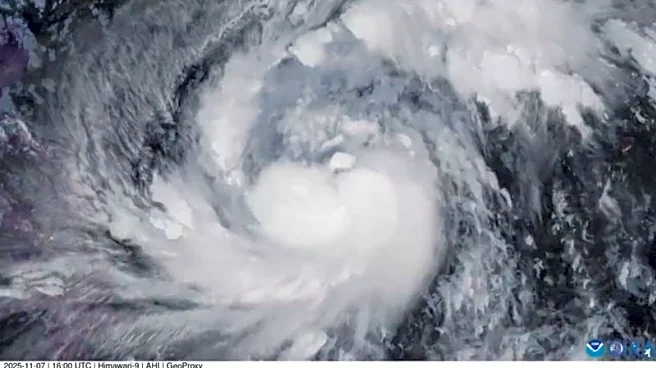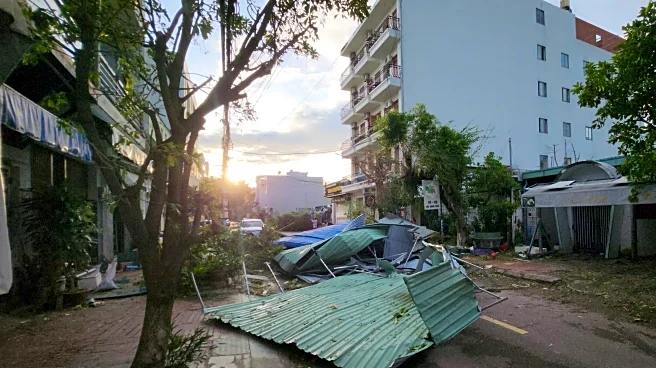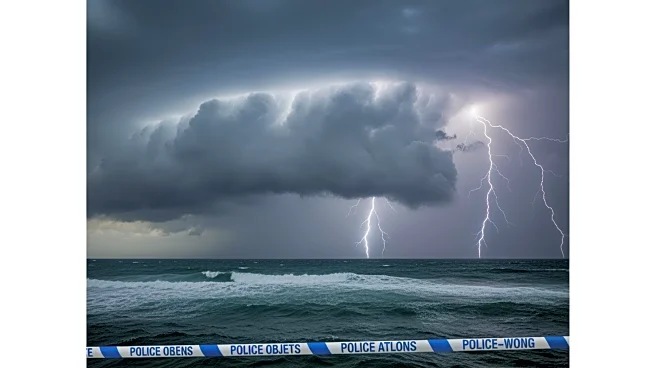What's Happening?
The Philippines is conducting a large-scale evacuation as Super Typhoon Fung-Wong approaches, threatening the archipelago with severe weather conditions. Over 100,000 residents have been evacuated from
eastern and northern regions, with the storm expected to make landfall in central Luzon. The Philippine Atmospheric, Geophysical and Astronomical Services Administration (PAGASA) has issued the highest alert level, Signal No. 5, for southeastern Luzon, while Metro Manila is under Signal No. 3. The typhoon poses significant risks to infrastructure, agriculture, and economic activities in the region.
Why It's Important?
The arrival of Super Typhoon Fung-Wong highlights the Philippines' vulnerability to major storms, following the recent devastation caused by Typhoon Kalmaegi. The storm's impact could extend beyond the Philippines, affecting critical infrastructure and economic activities in Southeast Asia. The U.S. Embassy in the Philippines has issued warnings to American citizens in affected areas, emphasizing the need for preparedness and evacuation. The situation underscores the importance of disaster readiness and international cooperation in response to natural disasters.
What's Next?
Super Typhoon Fung-Wong is expected to make landfall in Aurora province, with peak impacts anticipated on Monday morning. Authorities are urging residents to monitor updates from PAGASA and local governments. Recovery and assessment operations will commence once the storm passes, following the pattern established after Typhoon Kalmaegi. The U.S. Embassy recommends American citizens enroll in the Smart Traveler Enrollment Program for alerts and emergency coordination.













